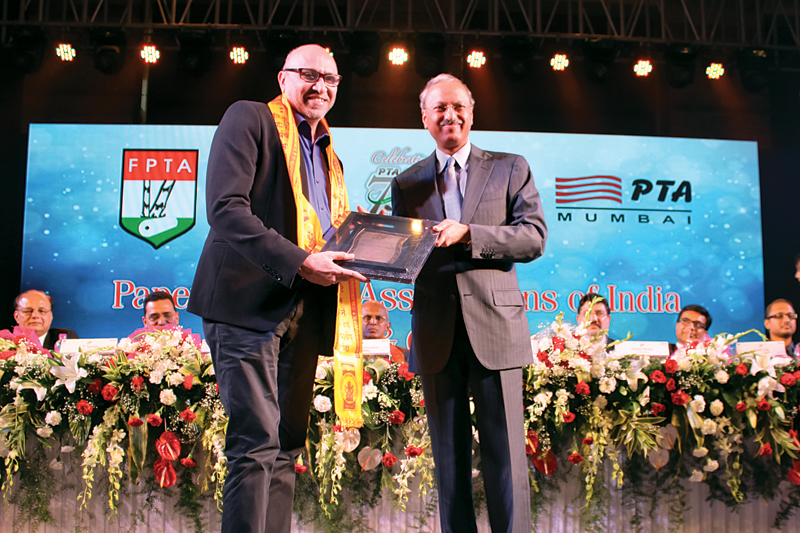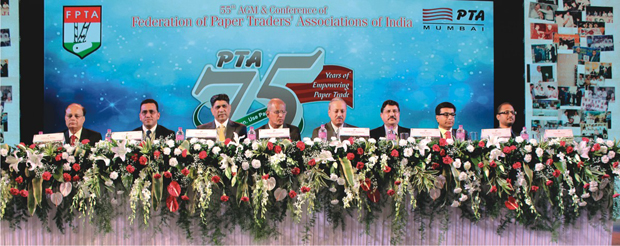We are about 14.5 million tonne as of now, projection says by 2020 our consumption and production will grow up to 20 million tonne and by 2030 we should be around 26.5 million tonne. So, we are talking about 6-7 percent growth in demand which clearly doesn’t exist in other parts of the world.
Mr. Harsh Pati Singhania.
More than 800 paper traders attended the 55th AGM and Conference of the Federation of Paper Traders Association at Grand Hyatt, Mumbai on September 23-24, 2016. The highlight of the conference was fact-rich, insightful speech delivered by the Chief Guest Mr. Harsh Pati Singhania, Vice-chairman and MD, JK Paper Ltd. The event became a brainstorming session for a host of issues the paper industry in general and the traders’ community in particular are facing. Sluggish overall demand, GST implementation and its probable impact, efficacy of imports to bridge the demand-supply gap, etc. were some of the subjects mooted during the event.
FPTA is a Growing Body
Addressing the gathering, Mr. C. Balasubramanian, President, FPTA said that the AGMs are a great opportunity to meet our suppliers and consumers under one roof. Giving a brief account of how FPTA was created in 1959, Mr. Balasubramanian asserted that the association has lived up to its marks and set objectives. “From 1959 till date, 54 AGMs have been held in different parts of the country and this is the 55th meeting. Also, we now have around 35 affiliate associations and over 10,000 members. That indicates how strong we have become in time,” he said.
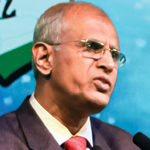
We need to bring two important issues to the industry leaders where we need help, one is campaigning against the usage of paper and another is establishing a paper museum similar to the ones in USA, Belgium, Germany, France, and Japan.
Mr. Balasubramanian further added, “We need to bring two important issues to the industry leaders where we need help, one is campaigning against the usage of paper and another is establishing a paper museum similar to the ones in USA, Belgium, Germany, France, and Japan.
“FPTA does service to its members in many meaningful ways – we promote cooperation among various associations and members, and we impart useful knowledge necessary for domestic and international trade and business. Also, we provide our members useful information, graphs and statistics that we receive from the Indian government.
“FPTA participates in national and international exhibitions along with giving presentations to central and state govt. regarding trade related topics like taxation, labor, packing, insurance, transport, manufacture, finance and other trade related issues. We promote and regulate our standards as per the trade customs, have also made an agreement with paper manufacturers and have a great system for stabilization of paper prices during the implementation of norms like GST, VAT etc. Additionally, FPTA hosts technical seminars, workshops and sessions, based on current topics like GST and promotes awareness regarding growing concern towards the environment and protection of green cover.
“There is a good demand where growth is 4 percent for paper and 12 percent for packaging boards; so there is a good future. I request the traders to tap this growth and earn maximum profits,” he concluded.
Growth is Sure to Happen across All Paper Segments

I would like to tell you that company like JK Paper is a net wood positive company. We plant around 8.2 to 8.5 crore trees every year and consume much less than that and there are other companies too which follow similar trends.
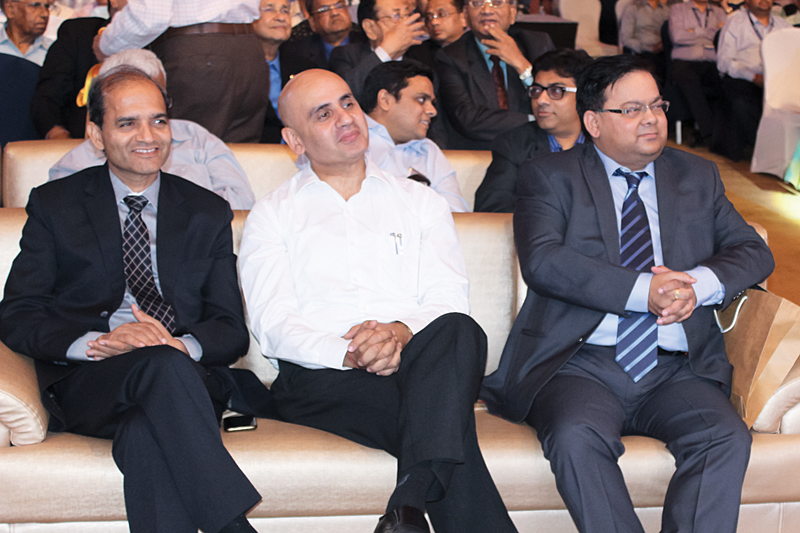
Speaking on the occasion, Mr. Harsh Pati Singhania, Vice-chairman and MD, JK Paper Ltd. first appreciated the efforts put in by FPTA in the form of technical seminars and workshops for spreading awareness on a host of issues related to paper. He particularly lauded the FPTA’s workshop on GST and its endeavor to educate people about the benefits of paper. Mr. Singhania also felt a need for concerted attempts to eliminate the myth that paper industry is the cause for deforestation. “We as an industry and paper consumers need to break the myth that paper means deforestation and cutting of trees. A major perception is that you are consuming natural wealth and resources which is no longer true because today in India the larger mills consume more than 80 percent of wood coming from large scale plantations – some of which grows on its own, while others are planted manually.”
Mr. Singhania also underlined the fact that paper industry has done remarkably well in terms of reducing its environmental footprints. “Resources, fossil fuel or effluent discharge, all of this has come down dramatically; in fact, I would like to tell you that company like JK Paper is a net wood positive company. We plant around 8.2 to 8.5 crore trees every year and consume much less than that and there are other companies too which follow similar trends. I think with help of your association and IPMA, we can actually promote this fact and maybe we need to put together a single plan to do this and it will be very good if we could do something like this,” he said.
He also expressed his support to the govt. initiatives to improve the overall economy which would eventually translate to the growth of paper sector. Programs like Make in India, Jan Dhan Yojna, Digital India, etc. may not directly result into paper sector growth, however these will provide impetus to mainstreaming 1.3 billion Indian citizens to result into growth of every industrial sector including paper, said Mr. Singhania. He said, “When we talk about digitization, for example, I believe that this is a very big wealth that we are living in a world where everything is there on the internet and we have developed a lot because of this digitization. In fact, what I see with greater connectivity and digitization is that business and commerce can grow, education can grow, people’s standard of living will grow and there stands an option for paper industry to grow.
“You may see in India, the base is very low and so are our penetration levels. The government spends 25,000 Cr. every year on the Sarv Shiksha Abhiyan and the education at the basic level is a driver for paper industry. You cannot have a village school that will transform from the slate or blackboard to the digital iPad immediately. Also, as per the study done in America, a survey done on 3,500 children, 90 percent of children preferred to use paper because they found that retention levels and absorption of knowledge was much better in print form as compared to the digital form.
“Also, with the increase in trade and commerce, you see new users and new consumers coming into the market, people who didn’t have electricity connection, phones, or internet connection earlier. This scenario resulted in increased demand for packaged food and goods; all of this will increase the demand for paper and paper boards in times to come. At least from our level of consumption, Indian markets will grow for years to come.”
Mr. Singhania is firmly optimistic about a sound growth pattern across all the paper segments in India. His sound belief in strong growth forecast about the Indian paper industry is based partially on his own study of domestic consumption pattern and partially on outlook projected by global research agencies. He said, “As per the recent study done by world renowned agency Pöyry (Finland), India will continue to grow in all segments of pulp and paper, whether it is packaging, advertising, writing & printing or boards. In fact, India from a global point of view is being seen as the fastest growing paper consuming economy in the world and that leads me to a point where I stay optimistic about future growth prospects of pulp and paper industry in India. We are about 14.5 million tonne as of now, projection says by 2020 our consumption and production will grow up to 20 million tonne and by 2030 we should be around 26.5 million tonne. So, we are talking about 6-7 percent growth in demand which clearly doesn’t exist in other parts of the world.
“Global pulp and paper industry is about 400 million tonne and grows by a mere 1.5 percent per annum despite of the decline in newsprint and writing & printing paper and the projection is to add 117 million tonne by 2030; the reason behind this is the fact that India forms a very small part of the global consumption. The trends in the west are different from what we have in India as in the west you have certain paper mills shutting down. But, what they are doing now is that they are trying to convert themselves into research units and they are trying to convert pulp in to bio-energy fuels to generate green energy. Additionally, they are working towards using lignin and cellulose to make new products.”
Mr. Singhania further said, “We are still seeing new investments being made in the pulp and paper industry largely because we are among developing economies in the world. It is quite fascinating to see what economies like Indonesia, Europe, and Brazil are doing; they have huge plantations and these plantations envelop the pulp mill itself. You can just see the green cover and as you move deeper you will see the mill in the middle. I envy them because I wish we could have same facility in India as well!
“Our pulp mills in India require 2 or 2.5 million tonne, but it need to travel minimum of 300 to 700 kms whereas, in countries like Brazil, the requirement of mills is around 13 to 15 lakh tonne, but there the pulp needs to travel 100 meters or sometimes even less than that. This gives them huge advantage on cost of raw material and actually that is the area where we had many problems; even European companies went through a difficult phase due to increase in the wood cost.
“As far as India is concerned, the cost almost doubled from 4000 rupees a tonne to 9000 rupees a tonne. In addition, because of zero import duty, paper could come from ASEAN and other countries competing with our paper. In this wake, industry could not increase prices and margins shrank and as the margins shrank, companies could not make new investments or add more capacities. Also, importing goods in the excess is not considered to be a good environment for trade as it might affect our production capabilities as you get to deal with various issues including foreign exchange fluctuations and taxes.
“Lastly, I would like to say that industry should be largely self-sufficient and domestic-based. Domestic mills know you better, they will supply you better products and will accommodate you better as they have easy reach to your customers. Therefore, it is important that industry be able to regenerate enough money to reinvest. It is very important for us to know how to reach our consumer and understand their needs and requirements.
“As per my observation, whether we like it or not, digitization and e-commerce is a channel to reach customers. So, I think we should focus on how we can take advantage of e-commerce & IT and embrace it rather than trying to resist as technology can clearly help us in reaching customers in faster way which is more economical and efficient. At JK Paper, we have loyalty program which is oriented towards the leaders, we have recently come up with India Photocopying Club which can directly connect us to jobbers. As people in the trade have dealers and distributors you must be able to connect directly with your customers avoiding the whole layer of intermediates because only than you can understand what they actually need, you can understand their requirements and supply accordingly. Also, you can use payment gateways to get money in different yet more trusted manner.
Speaking on GST, Mr. Singhania said, “In my opinion, GST will not make things different, but what will happen is that all transactions and businesses will be recorded – not only through GST, but even with income tax, challans and other duties – as everything has been digitized to ease the process of maintaining records. So, my belief is that not only paper sector, but the whole trade – wherever there are other trade practices, transactions or taxes – will become transparent.
“The major reason of higher tax rates in India is because first of all by legislation, India is the largest tax exempted economy in the world as agriculture is not taxable even the finance minister cannot tax agriculture unless there is an amendment in constitution. So, when almost 65 percent of people who are dependent on agriculture are exempted from tax, where will the government get taxes from? The answer is other remaining people like you and me. The collection of more taxes by the government can help in bringing down the rate of taxes. Everything will not be smooth from day one, but I believe things will become more efficient and manageable with implementation of GST. We as a business will benefit from GST.”
Innovation, Customer Focus, & Process Optimization: Ways to Growth

The world around us is becoming more demanding day-by-day and everybody wants low cost and best quality; so there is a role of manufacturer and once the manufacturers are competent enough to handle their roles responsibly and in a sustainable way, this industry will prosper and have a wonderful future.
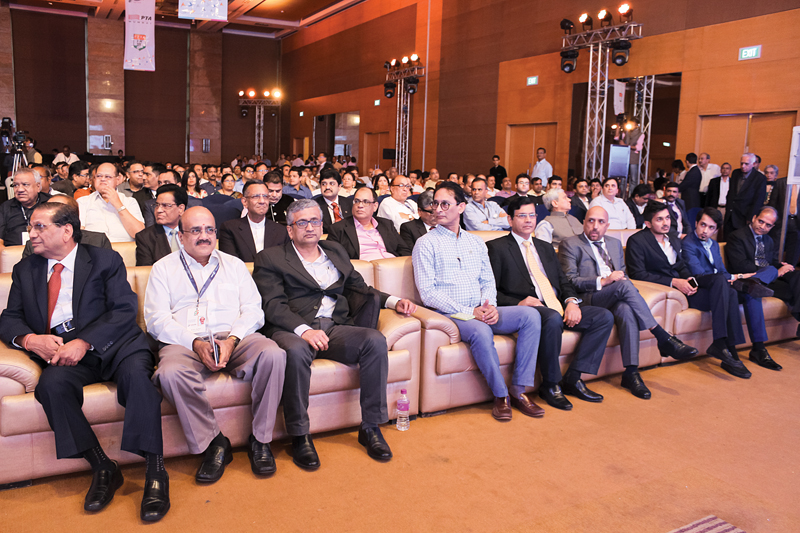
The Guest of Honor, Mr. JP Narain, Chief Executive Officer, Century Pulp & Paper, also expressed his firm belief in the Indian paper industry’s ascending growth in times ahead. Elaborating on the vitality of link between manufacturers and traders, he said, “The paper industry is basically a true connection between manufacturers and traders; it is like two sides of a balancing wheel as both have to work in coordination for consistent growth of the industry. I am optimistic about the growth and bright future of this industry.
“We at century paper make different type of paper which finds application in various industries. We have rayon grade pulp that goes to textile industry, we manufacture absorbent grade paper which goes to the laminate industry, and we also manufacture writing & printing paper from wood, bagasse, and recycled paper. Along with this, we manufacture tissues and multi-layer boards; so, Century Pulp & Paper is the only company that represents complete paper industry.
“The world around us is becoming more demanding day-by-day and everybody wants low cost and best quality; so there is a role of manufacturer and once the manufacturers are competent enough to handle their roles responsibly and in a sustainable way, this industry will prosper and have a wonderful future. For manufacturers, the role is to research new products and develop latest technology, implementing new technologies and utilizing all the resources in such a way that they can deliver best products to compete with global counterparts. Therefore, to make this business admirable, profitable and sustainable, we have to be very careful about three things: implementation of new technology & big innovations, customer focus, and processes. If a manufacturer can work on these things than I am sure the cost of delivery will beat your expectations and this industry can grow by leaps and bounds.
“Now coming to big innovations, we can make different things from a paper machine like paper machine producing writing & printing paper of around 70-80 GSM is competent enough to produce paper of 120 GSM to be used as the bottom of a cup or for outer coating. If you will stick to only writing & printing and keep saying that industry is not growing, things will not change; so it’s high time that you need to think the reason behind the slow growth.
“All I want to say is start thinking innovatively. For instance, tissue which is a basic paper product related to wellness industry growing at the rate of 16-17 percent is the driver for this industry. Similarly, packaging board is growing somewhere around 9-10 percent and growth of this is proportional to the growth of FMCG, retail, e-commerce and pharma. Thus, the growth is there in the industry and we cannot say that paper industry doesn’t have an optimistic future.
“Right now the paper demand is approximately 15 million tonne, out of which 13.8 is paper & board including tissue and 1.2 is newsprint. Of course, the demand for newsprint is not growing, but writing & printing that contains about 45 percent of total demand is growing by 4 to 5 percent. Also, packaging board is growing 9-10 percent, especially paper like tissue or other specialty paper are growing at the rate of 12 to 15 percent and the overall growth is 6 to 7 percent which is considered good for every kind of industry. So, we need to innovate and work on processes in order to deliver better products.
“Another thing that requires our attention is sustainable business. Mr. Singhania has already told that JK paper is fiber positive company. The point is whatever you are using should be given back to the society and environment, and the company that fails to do so will not be able to survive in the market. If the paper industry is using some trees it should be responsible enough to plant that many trees so that the environmental balance is not disturbed. If the paper industry is using lot of water, they should adopt processes to recreate that lost water and give it for irrigation so that the water balance is maintained. For the amount of carbon you are releasing, you should have plantations that can absorb that carbon. If you have such thoughts in mind, this business will be sustainable in future.”
Use Paper, Save Trees
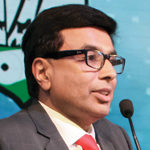
Mr. Sunil Gala, Executive Director, Navneet Publication Ltd. shared his observations about how the Indian and global paper industries are toeing different lines in terms of growth and industry practices. “It is for the first time that we are watching the Indian paper industry heading in a very different direction as compared to the international or global markets. Earlier, Indian markets and international markets moved in same manner, but this time scenario is different,” he said.
“As a consumer of raw material, paper being the main thing for us, we always expect cheaper prices and better products. But, I know few good companies whose prices have gone up very fast in the last few years. I would request those paper mills to try not to increase prices in such steep way. Also, import of W&P has increased of late and we as a consumer do not appreciate that as we always desire to buy domestically manufactured paper. However, now we have to look at other opportunities too because as consumers we need stable prices and many of the association members and traders have already realized that.”

Mr. Debasish Ganguly, GM (Marketing & Communication), JK Paper Ltd. said, “Paper is still the original wireless communication and it is truly one of the few sustainable products till date. A lot has been told that it is not environment-friendly through various modes of communication; even kids are taught about this in school. JK Paper is trying to break the myth through a small ad campaign ‘Use Paper, Save Trees ‘and what could have been a better place to launch it than this large event. The video of this initiative can be seen on Youtube & Facebook.”

Mr. Gaurang Mehta, Owner, M/s. Kosmos Paper Stores said, “The paper industry and trade is facing a turbulent time and strive to undergo major changes in near future and long-term future in terms of mergers, consolidations, etc. Demand is yet to grow bigger and due to global meltdown, India offers a picture of fastest growing economy. Also, with GST, we see lot of hopes as it will bring a revival in overall paper trade forcing traders to adopt best practices and maintain transparency. The void created due to demand and supply gap in the market is being filled by imports; so the discussions will help us understand the things and situation in better way.”

Mr. Shamji Karia, President Nominee (2016-17), FPTA said that the forthcoming year was going to be a very important year for traders, especially because of the implementation of GST. “I would request all the association members to provide detailed information regarding GST to everyone as FPTA is a platform where we provide information about every new law and trend in the industry,” he added.
Mr. Karia also said, “Out of our 35 associations, majority of the associations work in a commendable way. I thank all the associations for extending their support, although few of these associations don’t do a satisfactory job. So, I will note that I pay special visits to these less-performing associations to improve the work structure and strengthen FPTA.
“I am grateful to Ahmadabad Paper Traders Association and Kanpur Paper Traders Association for inviting me to the next year’s M.C. Meeting. I wish this coming year would bring prosperity and success in business, and happiness in life.”
